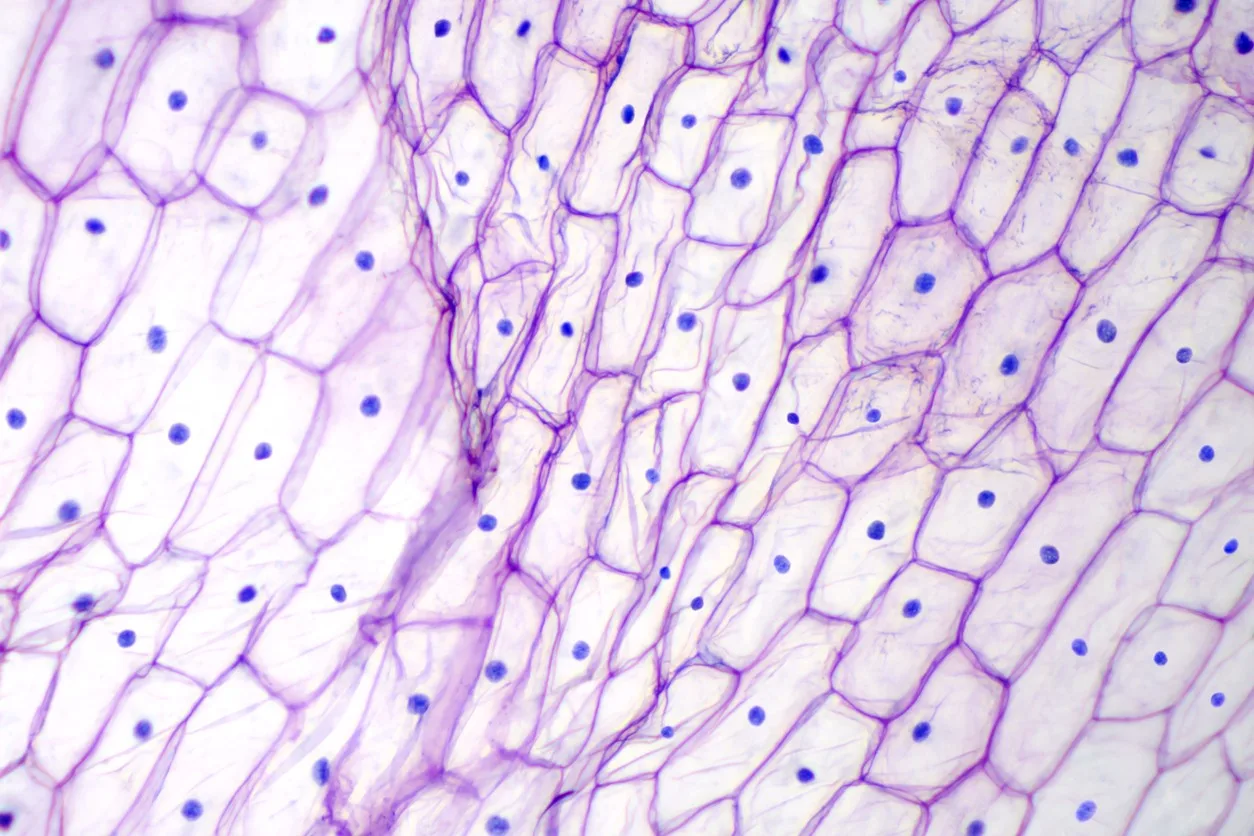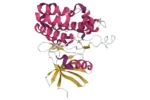Pal AHK Peptide Overview
Pal AHK peptide is associated with palmitoyl fatty acid molecules. This fatty acid feature appears to make AHK soluble in fats. Due to this, the rate at which Pal AHK peptide may potentially penetrate the skin increases and may increase its absorption by cells. Pal AHK present in the skin may activate the production of TGF-𝛽.
The activation of fibroblast production in the skin by Palmitoyl Tripeptide-3 may potentially increase the extracellular matrix (ECM) synthesis in the skin.[2] The extracellular matrix (ECM) is a complex network of minerals and extracellular macromolecules. It is dominated by enzymes, elastin, glycoproteins, collagens, and hydroxyapatite, considered responsible for providing biochemical and structural support to the surrounding cells. By increasing the extracellular matrix (ECM) synthesis in the cell, Pal AHK peptide may possibly increase the production of ECM components, increasing cell-to-cell attachment and communication, cell growth, and cell movement.[3]
Experiments suggest that Pal AHK peptide may possibly modulate the synthesis of vascular endothelial growth factor (VEGF). Vascular endothelial growth factor (VEGF) is a signaling molecule activated in the production of new blood vessels.[4] The scientists also explain that “Vascular endothelial growth factor (VEGF) is an endothelial cell mitogen and permeability factor that is potently angiogenic.” By enhancing vascular endothelial growth factors, Pal AHK may possibly boost the production of new blood vessels in the skin. Increased vascular endothelial growth factor (VEGF) by Palmitoyl Tripeptide-3 may allow for increased blood supply to the skin.
The vascular endothelial growth factor (VEGF) may prevent disease conditions such as macular degeneration, diabetes, and even cancer, though research in this area is ongoing. The vascular endothelial growth factor (VEGF) is an angiogenic factor suggested to influence angiogenesis by paving the way for endothelial cell proliferation, migration, and permeability. By increasing the production of VEGF, Pal AHK peptide may possibly enhance the prevention of cancer, macular degeneration, and diabetes while potentially preventing the onset of possible cardiac and cardiac-related diseases.
The production of new blood vessels may improve wound healing by depositing the injury site with collagen. This is considered to be due to the vascular endothelial growth factor (VEGF). Therefore, increasing VEGF by Palmitoyl Tripeptide-3 may increase the wound healing process. It is vital to note that in a laboratory setting, the vascular endothelial growth factor (VEGF) may exhibit mitogenic, chemotactic, and permeability action. These may be impactful in the regeneration and repair of non-healing wounds following diabetes and artery occlusive diseases.
Palmitoyl Tripeptide-3 may potentially increase VEGF production and contribute to modest visual improvement—averaging about two lines of vision. When Palmitoyl is added to AHK, it may potentially increase the penetrating rate of Pal AHK peptide in the cell membrane. Thus, increasing collagen production.
Pal AHK peptide has been suggested to minimize muscle contractions, therefore, decreasing and inhibiting the onset of wrinkling along the skin surface.
Oxidative stress (free-radical attack) is a considered cause of reduced follicle growth and loss. The peptide may potentially decrease follicle loss and enhance growth by decreasing oxidative stress. Due to the reduction of oxidative stress by Palmitoyl Tripeptide-3, dihydrotestosterone formation in follicles may increase.[5] The scientists note that “Animal studies indicate that palmitoyl tripeptide-3/5 may increase collagen synthesis… Studies [suggest] that palmitoyl tripeptide-3/5 can prevent collagen breakdown by interfering with MMP1 and MMP3 collagen degradation.” The inhibition of oxidative stress by Pal AHK peptide may potentially be achieved by boosting superoxide dismutase production. As a result, it may mitigate the damaging action of oxidative stress.
Disclaimer: The products mentioned are not intended for human or animal consumption. Research chemicals are intended solely for laboratory experimentation and/or in-vitro testing. Bodily introduction of any sort is strictly prohibited by law. All purchases are limited to licensed researchers and/or qualified professionals. All information shared in this article is for educational purposes only.
References
- Åubkowska, B., Grobelna, B. & Maćkiewicz, Z. The use of synthetic polypeptides in cosmetics. Copernic. Lett. 1, 75 (2010).
- Gorouhi, F. & Maibach, H. I. Role of peptides in preventing or treating aged skin. Int. J. Cosmet. Sci. 31, 327–345 (2009).
- Lourith, N. & Kanlayavattanakul, M. Biopolymeric agents for skin wrinkle treatment. J. Cosmet. Laser Ther. 18, 301–310 (2016).
- Nör JE, Christensen J, Mooney DJ, Polverini PJ. Vascular endothelial growth factor (VEGF)-mediated angiogenesis is associated with enhanced endothelial cell survival and induction of Bcl-2 expression. Am J Pathol. 1999;154(2):375-384. doi:10.1016/S0002-9440(10)65284-4.






